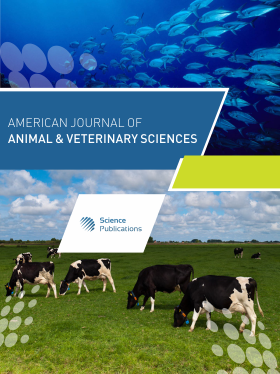Effect Administration of Omega-3, Omega-6 and Synthetic Cholesterol on Reproductive Characteristic of Male Quail (Coturnix coturnix japonica)
- 1 The University of Nahdlatul Wathan Mataram, Indonesia
- 2 The University of Muara Bungo, Indonesia
Abstract
The bird is one of the most important sources of animal protein for people and smallholders in developing countries. However, it is also important to look at their reproductive activity to maintain a sustainable population. Omega-3, omega-6 fatty acid and synthetic cholesterol may improve reproductive characteristics in animals including quail. Several treatments can be used to improve the quality of reproduction of the quail. The research was conducted to know the effect of the use of omega-3, omega-6 fatty acid and synthetic cholesterol on sperm quality, testosterone level, the testes and the uropygium size of male quails (Coturnix coturnix japonica). This research used 175 male quails at 6-w old. These divided into seven feed treatment groups. These are; R-0 (control), R-1 (0.163 mg omega-3/100g body weight (BW), R-2 (0.362 mg omega-3/100g BW), R-3 (0.163 mg omega-6/100g BW), R-4 (0.326 mg omega-6/100g BW), R-5 (20 mg cholesterol/100g BW) and R-6 (40 mg cholesterol/100g BW). The treatments were given orally for three different periods, within ten days. The data on testes size, uropygium sizes, and the testosterone level were analyzed statistically. The sperm quality data (sperm motility, sperm morphology, sperm viability, and sperm concentration) were analyzed with the Duncan Multiple Range Test (DMRT). The usage of omega-3, omega-6 fatty acid with a double dose (0.326 mg) showed the best response, which shows a significant increase of the testes weight (2.64 g), testes circumference (94.70 cm), testes volume (2.00 ml) and uropygium weight (2.75 g). Also, there was a significant increase in the level of testosterone (4.92 ng/ml). The use of double dose of (0.326 mg) omega-3 and omega-6 fatty acid or 0.163 mg omega-3 and omega-6 gave a good quality of sperm, including improvements in sperm motility (78.30% and 78.30%), sperm viability (73.19% and 86.06%) and sperm concentration (250.00 × 109/ml and 255.30 × 109/ml).
DOI: https://doi.org/10.3844/ajavsp.2018.136.142

- 3,973 Views
- 2,844 Downloads
- 0 Citations
Download
Keywords
- Omega-3
- Omega-6
- Synthetic Cholesterol
- Reproductive
